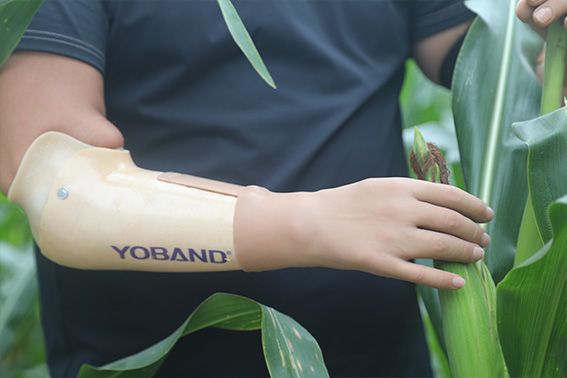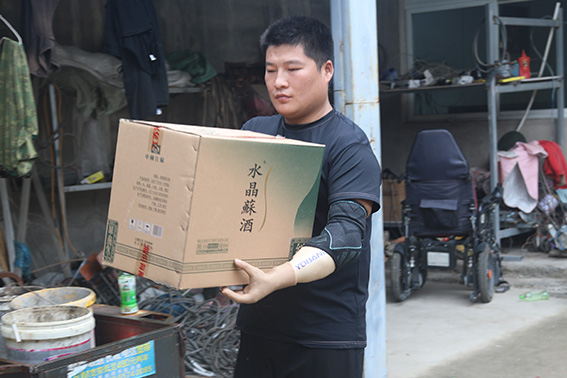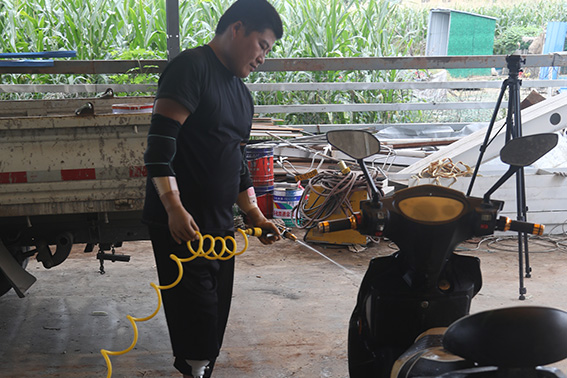News Center |
How well the prosthesis works?Although the assembled product is important, it is equally important how the patient manipulates and uses the prosthesis. Especially the upper limb prosthesis, if the patient does not carry out systematic residual limb training, prosthetic manipulation and use training, even if the prosthesis is designed dexterously, it is impossible to play its compensatory function well.

Functional training after the prosthesis is assembled. After the upper limb prosthesis has been tested, fitted, inspected, modified, and processed into a finished product, the wearer can be functionally trained. Patients must be required to perform upper limb prosthesis training, so that patients can master the correct wearing method and effectively exert the function of the prosthesis. Since the upper limb prosthesis is very different from the healthy limb in terms of weight-bearing method and control method, if the correct and systematic use and training are not carried out, a bad posture will be formed. Once formed, it will be very difficult to correct. Including how to put on and take off the prosthesis, and carry out the necessary functional training for different types of upper limb prostheses.
In addition to guiding patients' training work, upper limb prosthetic trainers should also do a good job in psychological rehabilitation of patients, fully mobilize the enthusiasm of patients, and improve patients' confidence in using upper limb prostheses. Before starting training, the patient must be told what is the function of the upper limb prosthesis? What can be done? Can't do? In the training, it is necessary to formulate a rehabilitation training plan according to the individual, first easy and then difficult, pay attention to cultivating the patient's perseverance to adhere to the training, give full play to the patient's strengths, and enable the patient to firmly grasp the methods of manipulating and using upper limb prostheses.

Training is to be able to use prosthetic limbs with proficiency with residual limbs. Residual limb training for upper limb amputees is to restore the joint range of motion and enhance muscle strength as soon as possible.
Make the residual limb muscular and increase muscle strength to obtain enough strength to manipulate and control the upper limb prosthesis. After the muscles are developed, it can also increase the pressure of the residual limb in the prosthetic socket and increase the stability of the residual limb. Extend the range of motion of the upper extremity joints to obtain the indexed displacement required to maneuver the cable-controlled prosthesis. Prevent or correct bad posture caused by limb imbalance and uneven muscle distribution after amputation, such as scoliosis. Increase the strength of the EMG signal source, and recover the EMG of the amputee's residual limb.

After upper extremity amputation, there are two types of tissue on the residual limb: one is traumatized tissue, and the other is intact tissue. The intact part also changes after dealing with trauma. Joints, for example, are immobilized during surgery, resulting in limited range of motion that hinders the effective use of prosthetics. To prevent this tendency, all joints close to the amputation site must be exercised every day.
Shoulder joint dissection: Patients with shoulder joint dissection and upper arm high amputation must practice shoulder lifting, sinking and forward flexion and extension movements, both shoulders must be performed. This is because when the prosthesis is used, the source of force is not only from the residual shoulder, but also from the healthy shoulder.

Upper arm amputation: In addition to shoulder movement, flexion, extension, internal rotation, external rotation, abduction, and adduction of the upper arm need to be added.
Forearm amputation: Add elbow flexion and extension and forearm pronation and supination on the basis of shoulder and upper arm training.

The above movements can be practiced by themselves when the residual limb conditions permit; if the residual limb conditions do not permit, passive training (a combination of active and passive) should be assisted by a physical therapist until the patient can perform active training.
Functional training, which combines passive stretching with patient-active movement, should be initiated early after amputation until the patient can freely and painlessly move the residual limb throughout the range. In addition, if combined with massage or physiotherapy in training, it has obvious effects on eliminating various fears of the patient when dealing with residual limbs, preventing adhesions, eliminating swelling, and improving blood circulation.
Copyright © 2015 USA-YOBAND. All Rights Reserved 沪ICP备09003269号